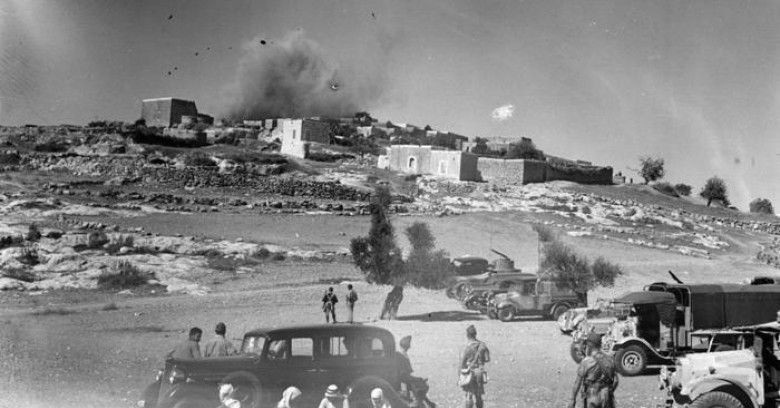RAMALLAH, March 8, 2010 (WAFA)- “About half of the Palestinian society are females at the end of year 2009,” said the Acting President of the Palestinian Central Bureau of Statistics (PCBS), Ms. Ola Awad, presenting statistical figures about the conditions of Palestinian women through a press release on the occasion of the eighth of March – The International Woman Day.
The dissemination of these most recent statistics aims to re-emphasize the importance of this day for Palestinian women in particular and women all over the world in general. Palestinian women constitute about half of the Palestinian society with a sex ratio of 103.1 males for 100 females according to population projections at end of 2009.
Ms. Ola Awad reaffirmed the important role of the Palestinian woman in society as mother, wife, sister, daughter, worker, and struggler; in addition to her vital contribution in social, economic and political fields. The eighth of March comes this year while the Palestinian woman still suffers from the conditions on the ground that touch the lives of all Palestinians.
The estimated population in the Palestinian Territory at end of 2009 reached about 4.0 million distributed as 2.026 million male (50.8%) and 1.965 million female (49.2%). In other words; for every 100 person there are 49 females.
As a result of the decline in mortality rate in the Palestinian Territory, life expectancy has risen in 2009 to 71.8 years whereas the life expectancy for females was 73.2 years and 70.5 for males with variations between the West Bank and Gaza Strip.
Regarding female’s marital status, statistics for year 2009 indicated that more than half of women aged 15 years and above were married (55.9%), while 6.1% windowed, 1.3% divorced, 0.2% separated, and 36.5% single. Celibacy of females in the age group 30 years reached 9.9% in 2007. The median age for females at first marriage is 19.5 years in the Palestinian Territory in 2008.
Females education is one of the social rights for the achievement of equity between men and women for sustainable development. During 2009, about 8 out of every 100 females aged 15 years and above were illiterate; which is four times higher compared with males in the same age group. Statistics also showed that more than half (55.2%) of the enrolled as well as graduated students were females during the scholastic year 2007-2008. Also, more than half (54.8%) of the teaching staff in government schools were also females during the scholastic year 2008-2009.
Statistics also showed a rise in the percentage of enrolled females in the secondary education where out of every 100 students, there are 54 females. On the other hand, the percentage of male students enrolled in elementary schools reached 50.5% compared with 49.5% for females during the scholastic year 2008-2009 is still low at about 15.5% out of total females participated in Labor force, compared with 67.0% out of total males participated in Labor force, while unemployment rate for females reached 26.4% in 2009
Women participation in the labor force is considered important for sustainable development. The labor force participation rate for females (15 years and over) in the Palestinian Territory during 2009 reached 15.5% compared with 67.0% for males. In the West Bank, this rate was 17.4% for females compared with 69.5% for males; while in Gaza Strip was 12.2% for females and 62.5% for males.
Women participation in the labor market in the Palestinian Territory is considered the lowest compared with other countries, and the international development indicators showed the percentage of women participation in the Middle East reached 26.0% in 2007.
Regarding unemployment under the definition of ILO, unemployment rate for females (15 years and over) reached 26.4% compared with 24.1% for males. Unemployment rate for persons who completed thirteen years of schooling or above was higher among females than males. Results showed that out of every 100 unemployed females, there were 36 women with thirteen years of schooling or above compared with 17 men among every 100 unemployed males.
As for the participation of females (15 years and above) in economic activities, the highest was in education at 34.7%; followed by agricultural, foresting, hunting, and fishing at 20.5%; in addition to health at 9.4%.
While the world celebrates freedom and independence, Palestinian detainees are still locked up in Israeli jails. According to the latest statistics, there are approximately 7,300 Palestinian and Arab prisoners in Israeli jails, 34 of them are women under different prison terms. There are 20 sentenced women of whom 5 sentenced with life sentence. In addition, 12 still awaiting trail, and 2 in administrative detention.
The participation of Palestinian women in the political life has witnessed development in year 2009 as they started to compete with men and occupy high level positions in the institutions of the PNA. There are 5 female ministers out of 22 ministers in the Palestinian cabinet, one female member in the executive committee for the Palestinian Liberation Organization since 1964, first female chief of Palestine Stock market Committee, first female governor for Ramallah and Al-Bireh. These appointments reflect the success of Palestinian women in leading large institutions in effective and professional manner.
The percentage of women who work as journalists in the Palestinian Territory reached 15.8%; which indicate that out of every 100 journalists during 2009, about 16 were females. In addition, there were 12 females in every a 100 judge in the Palestinian Territory during 2008.
Also, there were 5 Palestinian female ambassadors till March 2008. In the health sector, there were 56 female nurses out of every 100 nurses and that reflects a more favorable view of females to the nursing occupation as compared with other health occupations according to statistics in 2008. In addition, one fifth of dentists were females and about half of pharmacist were females as well.










